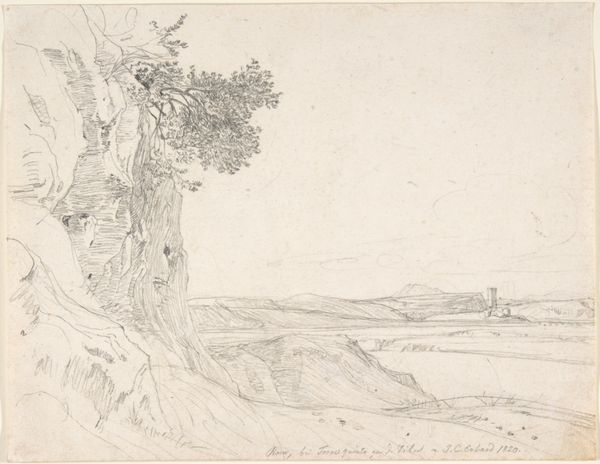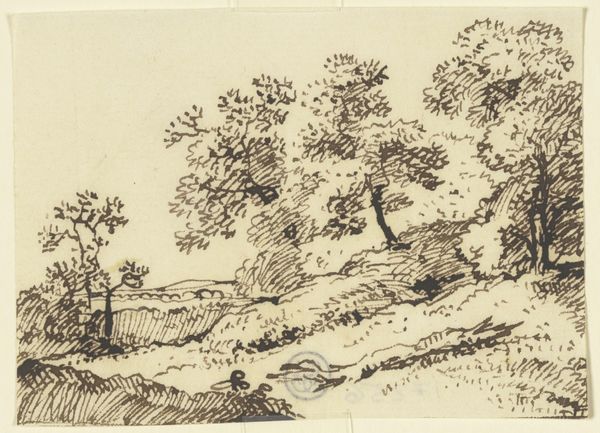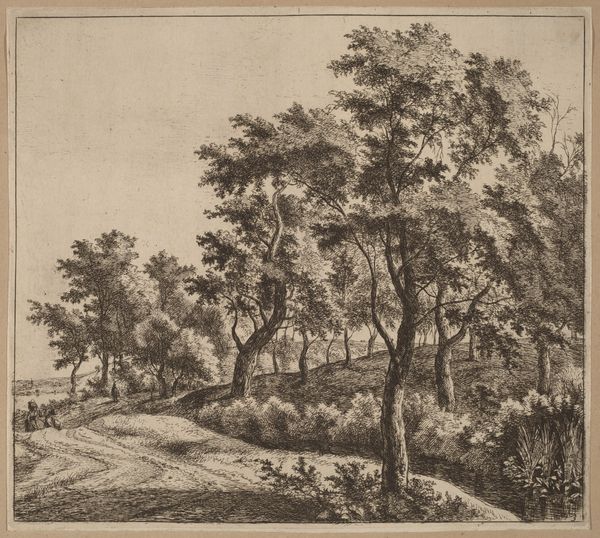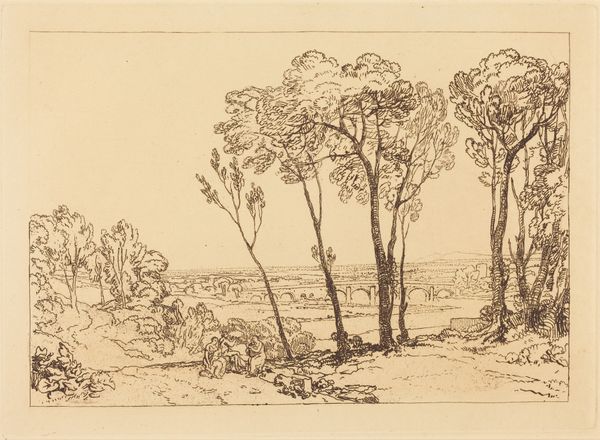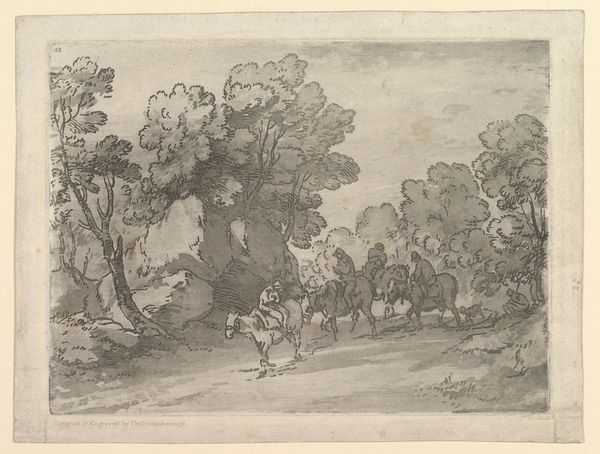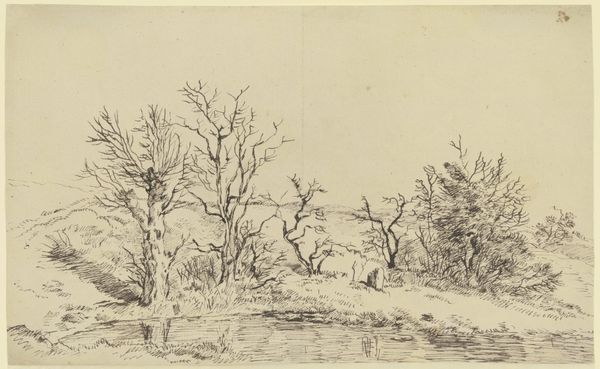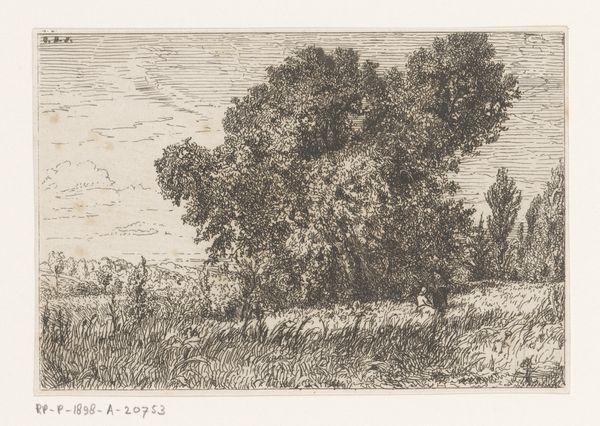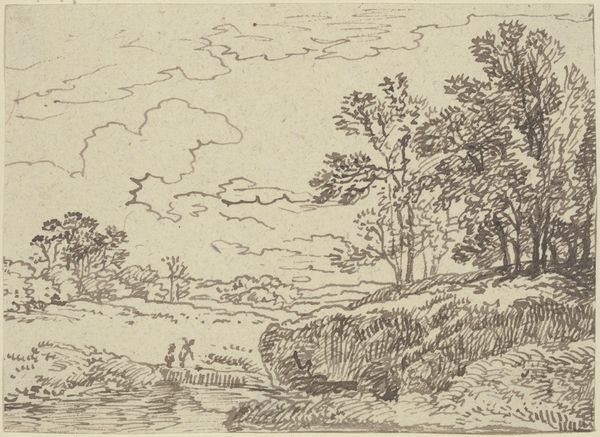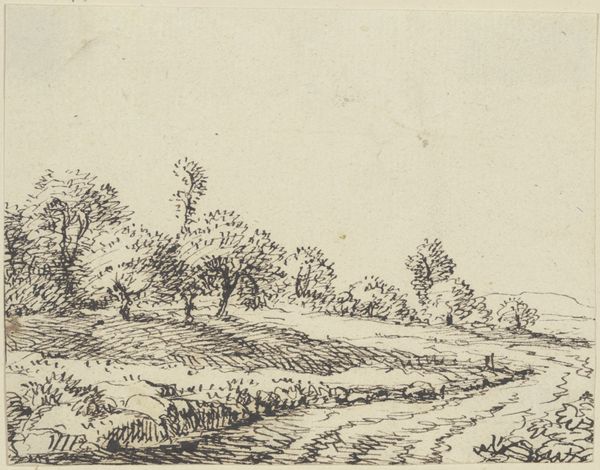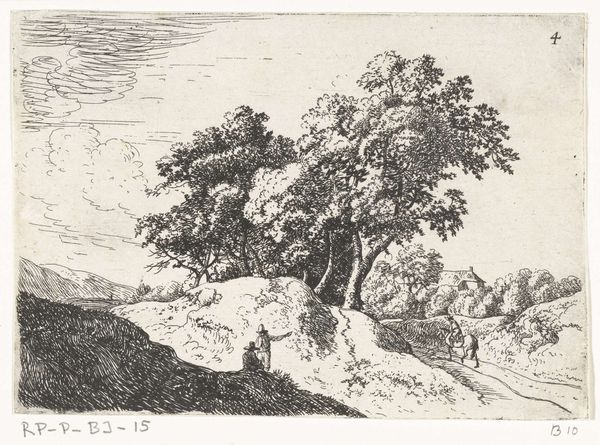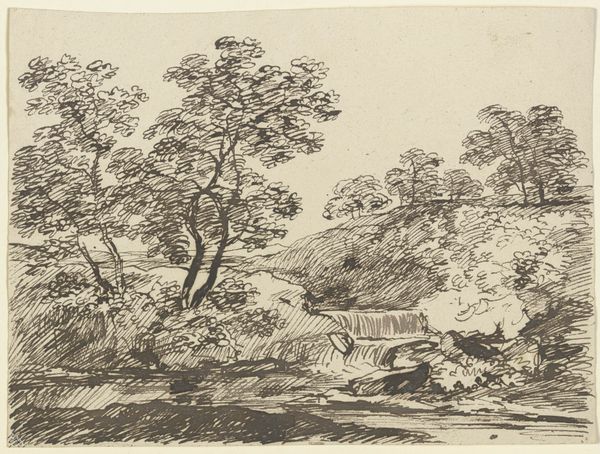
print, etching
# print
#
etching
#
landscape
#
line
Copyright: National Gallery of Art: CC0 1.0
Editor: This is Alphonse Legros’s “Landscape with Haystacks,” a print made using etching. It feels very grounded to me, like an observation of simple rural life. What do you see in it? Curator: I see Legros engaging with a growing fascination among late 19th-century artists with rural subjects, a shift away from purely academic themes. How might the increasing industrialization of Europe influence such subject matter, do you think? Editor: It makes me think about how rapid industrial growth drove some artists to look for a more "authentic" and maybe less complicated subject, to depict a vanishing world? Curator: Precisely! Legros, in presenting this landscape through the readily reproducible medium of etching, also makes it accessible to a wider audience. The art market was expanding, creating opportunities for artists to address varied social classes with diverse imagery. Consider the politics inherent in portraying an agrarian scene; what is Legros suggesting, consciously or unconsciously, about labor and land? Editor: I hadn’t thought about it in those terms. I suppose the scene appears serene, almost idealized, which could be seen as downplaying the hard labor involved in farming. It’s like he’s offering a specific vision of the countryside to an urban audience. Curator: Exactly! These works played a part in constructing a certain idea of rural life for city dwellers. What does the rise of landscape art mean for how we, as a society, relate to nature and work? Editor: So it’s less about just the pretty picture and more about how art actively shapes cultural perceptions? Curator: Yes, and about who gets to shape those perceptions! Looking at "Landscape with Haystacks," I see how even a seemingly simple scene is deeply embedded in socio-political dynamics. Editor: I will certainly see rural landscapes very differently going forward! Thanks for that.
Comments
No comments
Be the first to comment and join the conversation on the ultimate creative platform.
